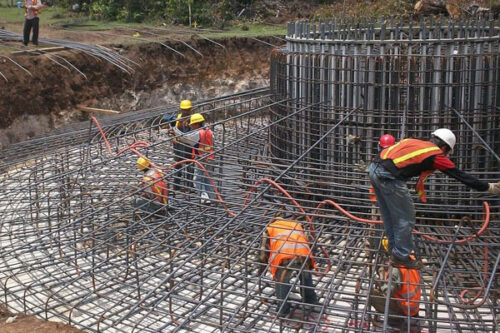THE IMPORTANCE OF SOIL AND FOUNDATION ENGINEERING IN CONSTRUCTION
The Importance of Soil and Foundation Engineering in Construction
When it comes to building a strong and stable structure, the importance of soil and foundation engineering cannot be overstated. The foundation of any building is the key to its longevity and safety. In this article, we will explore the crucial role that soil and foundation engineering play in construction, highlighting key points along the way.
Understanding the Soil
Before construction can begin, a thorough understanding of the soil at the building site is essential. Soil is not a uniform substance; it varies in composition, density, and load-bearing capacity from one location to another. Soil testing and analysis are critical steps in determining the suitability of the site for construction.
Key Point 1: Soil testing helps identify soil types, their characteristics, and any potential issues such as high moisture content or low bearing capacity.
Choosing the Right Foundation Type
Based on the soil analysis, engineers can choose the most suitable foundation type for the construction project. There are several types of foundations, including shallow foundations (such as spread footings and mat foundations) and deep foundations (such as piles and caissons). The choice depends on factors like soil conditions, building load, and environmental considerations.
Key Point 2: The correct foundation type ensures that the building’s weight is distributed evenly and can withstand various external forces, such as wind and earthquakes.
Ensuring Structural Integrity
One of the primary goals of soil and foundation engineering is to ensure the structural integrity of the building. A stable foundation provides a solid base for the entire structure, preventing settlement, tilting, or other structural issues that can compromise safety and durability.
Key Point 3: Properly engineered foundations minimize the risk of structural failure, which can be costly to repair and dangerous to occupants.
Managing Environmental Factors
Soil and foundation engineering also take into account environmental factors, such as water levels, soil erosion, and seismic activity. These factors can have a significant impact on the stability of a building’s foundation.
Key Point 4: Engineers incorporate design and construction methods that address environmental challenges to prevent long-term damage to the foundation.
Enhancing Safety
Safety is paramount in construction. A well-engineered foundation ensures that the building can withstand both expected and unexpected loads, including heavy equipment, extreme weather events, and soil settlement over time.
Key Point 5: Proper soil and foundation engineering contribute to the overall safety of the construction site and the longevity of the building.
Minimizing Costly Repairs
Investing in thorough soil and foundation engineering at the beginning of a construction project can help avoid costly repairs and structural issues down the road. It is more economical to address potential foundation problems during the planning and design phase than to make extensive repairs after construction is complete.
Key Point 6: Early investment in soil and foundation engineering can save money in the long run by preventing costly foundation-related problems.
Adhering to Building Codes and Regulations
Engineers and builders must adhere to local building codes and regulations to ensure that a structure meets safety standards. Soil and foundation engineering are essential components of compliance with these codes, ensuring that the construction project is approved and permitted.
Key Point 7: Compliance with building codes and regulations is a legal requirement, and proper soil and foundation engineering are integral to meeting these standards.
Soil and foundation engineering are foundational (pun intended) elements of any construction project. They provide the groundwork for safe, stable, and durable structures. Ignoring or cutting corners in soil and foundation engineering can lead to costly problems and, in some cases, catastrophic failures. Therefore, investing time and resources into proper soil analysis and foundation design is a fundamental step in ensuring the success and longevity of any construction endeavor.


